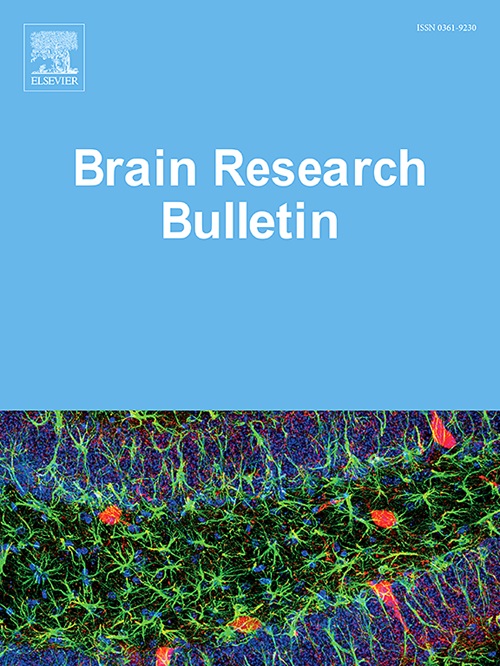C/EBPβ in Alzheimer’s disease: An integrative regulator of pathological mechanisms
IF 3.5
3区 医学
Q2 NEUROSCIENCES
引用次数: 0
Abstract
Alzheimer's disease (AD) stands as one of the most prevalent neurodegenerative disorders, characterized by a progressive decline in cognitive function, neuroinflammation, amyloid-beta (Aβ) plaques, and neurofibrillary tangles (NFTs). With the global aging population, the incidence of AD continues to rise, yet current therapeutic strategies remain limited in their ability to significantly alleviate cognitive impairments. Therefore, a deeper understanding of the molecular mechanisms underlying AD is imperative for the development of more effective treatments. In recent years, the transcription factor C/EBPβ has emerged as a pivotal regulator in several pathological processes of AD, including neuroinflammation, lipid metabolism, Aβ processing, and tau phosphorylation. Through intricate post-translational modifications, C/EBPβ modulates these processes and may influence the progression of AD on multiple fronts. This review systematically explores the multifaceted roles of C/EBPβ in the pathogenesis of AD, delving into its crucial involvement in neuroinflammation, Aβ production, tau pathology, and lipid metabolism dysregulation. Furthermore, we critically assess therapeutic strategies targeting C/EBPβ, examining the challenges and opportunities in regulating this factor. By synthesizing the latest research findings, we offer a more comprehensive understanding of the role of C/EBPβ in AD and discuss its potential as a therapeutic intervention target.
C/EBPβ在阿尔茨海默病中的作用:病理机制的综合调节
阿尔茨海默病(AD)是最常见的神经退行性疾病之一,其特征是认知功能进行性下降、神经炎症、β淀粉样蛋白(a β)斑块和神经原纤维缠结(nft)。随着全球人口老龄化,阿尔茨海默病的发病率持续上升,但目前的治疗策略在显著缓解认知障碍方面的能力仍然有限。因此,深入了解AD的分子机制对于开发更有效的治疗方法至关重要。近年来,转录因子C/EBPβ在AD的几个病理过程中发挥关键调节作用,包括神经炎症、脂质代谢、a β加工和tau磷酸化。通过复杂的翻译后修饰,C/EBPβ调节这些过程,并可能在多个方面影响AD的进展。本综述系统地探讨了C/EBPβ在AD发病机制中的多方面作用,深入研究了其在神经炎症、Aβ产生、tau病理和脂质代谢失调中的重要作用。此外,我们批判性地评估了针对C/EBPβ的治疗策略,研究了调节该因子的挑战和机遇。通过综合最新研究成果,我们对C/EBPβ在AD中的作用有了更全面的了解,并讨论了其作为治疗干预靶点的潜力。
本文章由计算机程序翻译,如有差异,请以英文原文为准。
求助全文
约1分钟内获得全文
求助全文
来源期刊

Brain Research Bulletin
医学-神经科学
CiteScore
6.90
自引率
2.60%
发文量
253
审稿时长
67 days
期刊介绍:
The Brain Research Bulletin (BRB) aims to publish novel work that advances our knowledge of molecular and cellular mechanisms that underlie neural network properties associated with behavior, cognition and other brain functions during neurodevelopment and in the adult. Although clinical research is out of the Journal''s scope, the BRB also aims to publish translation research that provides insight into biological mechanisms and processes associated with neurodegeneration mechanisms, neurological diseases and neuropsychiatric disorders. The Journal is especially interested in research using novel methodologies, such as optogenetics, multielectrode array recordings and life imaging in wild-type and genetically-modified animal models, with the goal to advance our understanding of how neurons, glia and networks function in vivo.
 求助内容:
求助内容: 应助结果提醒方式:
应助结果提醒方式:


